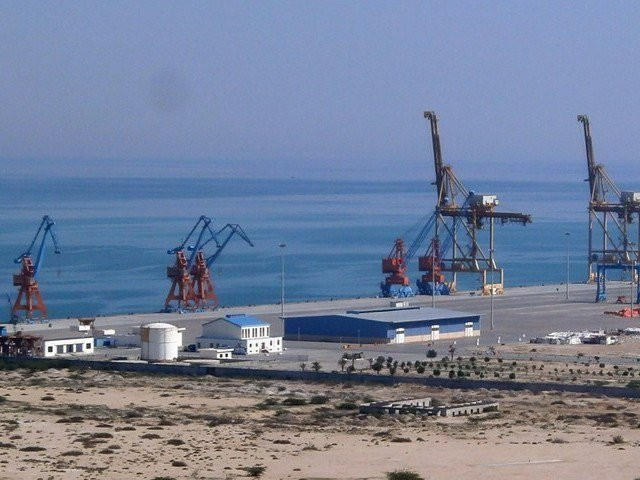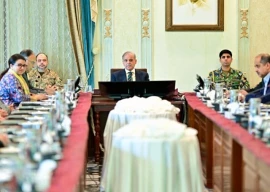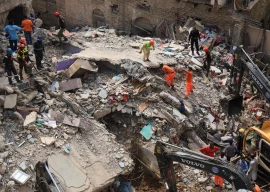
Providing security for the CPEC is a huge challenge that the military has accepted and is in line with what has already been raised — a division-size force that directly reports to the GHQ. There are six wings of the Civil Armed Forces, units of the Special Services Group, Rangers and police deployment as well, to supplement this security division. But would just a division-size force be enough to ensure the security of the CPEC?
Army conscious of intrigues against CPEC: Gen Raheel
We don’t know at this stage how the military plans on guarding the CPEC. Would it be building a string of security posts at regular intervals? Picketing the roads? Deploying armed guards with moving convoys? Patrolling the large stretches of the laid-out gas pipelines? Carrying out security scans of railway lines to defeat terrorist threats? Or would it deploy military combat groups as a quick reaction force at sensitive areas to deter developing threats? What we know at this stage is that 785 kilometres of the Iran-Pakistan gas pipeline will pass through Balochistan and Sindh to culminate at Multan. We also know that another $2 billion and 1,100 kilometre-long gas pipeline being built with Russian collaboration will connect Karachi’s LNG terminals with Lahore. There are also new railway tracks planned to be laid from Gwadar to Quetta and Jacobabad. Bostan will be connected with Dera Ismail Khan via a 662-kilometre track. A 682-kilometre track will be laid to connect Havelian with Khunjerab. Knowing how much security the huge road network (the Eastern and Western routes) and accompanying industrial parks, energy projects and economic zones will demand, readers may like to go through the series of three articles written by Rafiullah Kakar in this paper, titled “Making sense of the CPEC controversy”.
What we also know is that Gwadar, a city of 80,000 inhabitants would in time witness a demographic turnaround — not only the Chinese and other foreigners, but many locals and business opportunity seekers will flood the city. According to an estimate, the population of the city may touch 1.5 million in two years. Will Gwadar eventually be surrounded by a containment fence? How would the Baloch separatists, who already challenge half of the 8 million people living in the province as ‘outsiders’, consider this huge influx of non-natives into Gwadar?
To guard such a huge project, the military will obviously have to deploy more than a division’s force given the vast geographical space on which these multiple administrative projects are coming up and which it is committed to defending. But it’s not guarding the physical space of the economic corridor that concerns the military — given the resources, it does not lack the ability and the capability to perform this task. What concerns the military is the political space and the non-military efforts within that space which must complement and aid military efforts. A reflection of that was evident when General Raheel Sharif, during his visit to SSD Division, said that “there is a need to ensure a peaceful environment to be able to push all planned development projects”.
Pakistan Army leaving no stone unturned to protect Chinese investment
The need to “ensure a peaceful environment” is a soft reminder by the general to the politicians not to push the military too far and further from its political utility. Protecting the economic corridor is not a big task for the military — it’s the politics flanking the corridor that concerns the military, for the true measure of security is not the overextended military deployment and expansion as this mission would entail, but the lack of it resulting from the ability of policymakers to build a peaceful national environment through political consensus and political unity. Soldiers, by nature, are servants of society and no matter how able a general is, his military strategy only serves a policy in a given environment built by politicians and the policymakers. The more difficult the environment, the lower are the chances for the success of the military strategy.
Protecting the CPEC requires a number of defensive initiatives, primarily to pre-empt and forestall militant attacks. To do this intelligence work will be very important for the achievement of the mission. Apart from the dedicated protection forces in the designated areas, the military must consider a parallel designation of intelligence units. The military will have to build up human intelligence networks and also deploy reconnaissance as well as armed drones to act not only as its eyes and ears but also as the quickest means of offensive response to a developing threat. Planning and constructing mutually coordinating drone bases to constantly monitor and guard strategically important areas, is likely to limit and mitigate the threat.
Lastly, given India’s official position that the CPEC is ‘unacceptable’ to it, we must expedite guarding and securing our western frontier from where India designs and executes its proxies against Pakistan. This must accompany political will and efforts to address Baloch alienation and political dialogue with the Taliban and their various extremist factions.
Published in The Express Tribune, February 26th, 2016.
Like Opinion & Editorial on Facebook, follow @ETOpEd on Twitter to receive all updates on all our daily pieces.


















COMMENTS
Comments are moderated and generally will be posted if they are on-topic and not abusive.
For more information, please see our Comments FAQ